Tech trials to find Antarctica's 'missing' iron meteorites
- Published
Geoff Evatt: The aim is to develop a robust system that will work in the Antarctic
The project to find Antarctica's "missing meteorites" is making excellent progress, say scientists.
A group led from Manchester University is developing detection equipment it believes will discover a bounty of iron space objects buried in the polar ice.
This survey gear has just come through a week of successful trials.
Presently, 10 times fewer iron meteorites are found in Antarctica compared with other parts of the globe.
The scientists say this discrepancy has nothing to do with differing fall rates; rather, it can be explained simply by the tendency of metal objects to sit just under the ice surface out of the view of collectors.
The team's equipment, adapted from mine-detection technology, was dragged behind a snowmobile across a simulation field set up at the Ny-Ålesund research base on Svalbard in the Arctic.
Dummy meteorites were hidden in a glacier at varying depths and then the system driven over them to locate their positions.
"It's gone really well," said Dr Geoff Evatt. "We've got the mechanics of the detector pretty nailed down in terms of the towing, the data-logging, the GPS coordinates - the way we use the system.
"There's the inevitable teething problems, of course, in making sure the equipment all works with the environment in the cold, but the only way to sort out those problems is to get out here and start using the detector, he told BBC News"
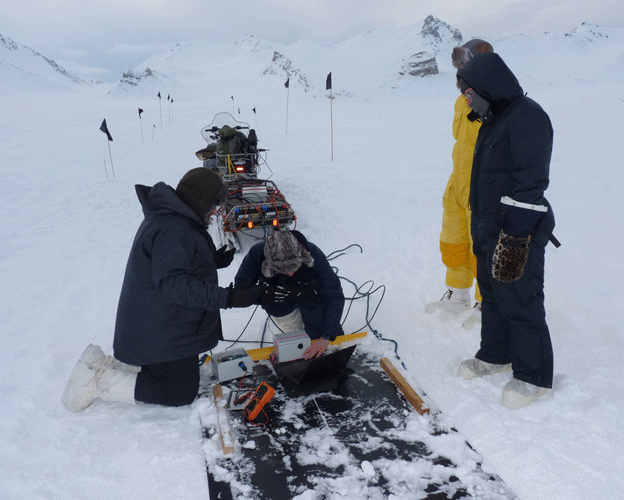
The trials have been run close to the Ny-Ålesund Arctic base
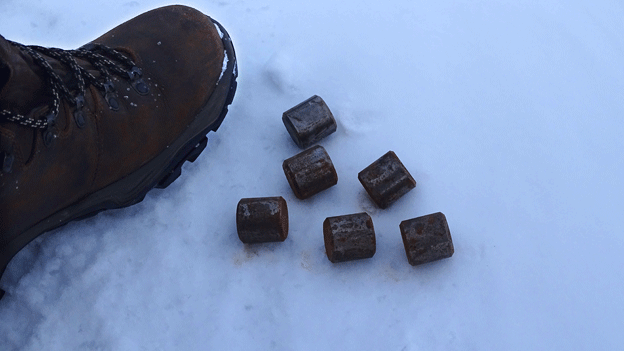
Dummy meteorites were buried along the test track at different depths
Of the more-than-35,000 meteorites catalogued in collections worldwide, something like two-thirds have been retrieved from Antarctica.
Not only does the colour contrast make for easier prospecting, but hunters also get a helping hand from the way the ice sheet moves. Meteorites that crash in Antarctica's high interior are buried and transported towards the coast, ultimately to be dumped in the ocean.
But if this conveyor happens to run into a barrier on the way - such as a range of mountains - the ice will be forced upwards and scoured by winds to reveal its cargo.
Meteorite hunters on the continent concentrate their searches in these special "stranding zones".
What they have noticed, however, is a bias towards stony-type space rocks.
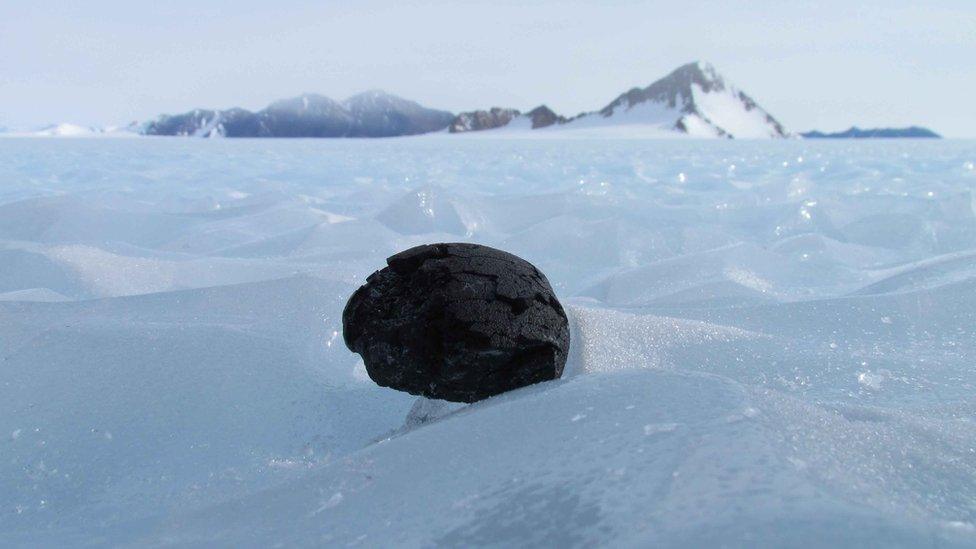
When flowing ice meets a mountain range, it is forced upwards to reveal the meteorites
The iron ones are underrepresented compared with the global distribution. Modelling work by Dr Evatt and his team suggests the metal meteorites are still there; they just do not come back to the surface in the same way.
It is thought that as they start to rise through the ice, their iron absorbs energy from the Sun and efficiently warms the meteorites' undersides, enabling them to sink back down.
Manchester team-member, Dr Katherine Joy will be heading out to Antarctica later this year on an initial survey to assess the stranding zones.
Places with the highest density of stony-type meteorites sitting on the surface should also be the locations with the greatest number of iron meteorites hidden in the ice below.
"A reconnaissance trip will help the team investigate which blue icefields that have not been visited before are productive for meteorite collection," she said.
"The outcomes of this initial search will help us to target where to take the full detector setup to test for buried meteorites."
This is likely to happen in the austral summer of 2019/2020. But working in these remote locations will be extremely challenging and will require the assistance and expertise of the British Antarctic Survey.
Equipment failure is an ever-present hazard and the team knows it has to go with a detector that is robust and simple to use.

Arctic fox: The team has had an interested spectator during the trials
"Ny-Ålesund has been reasonably comfortable so if we've needed to pop up a lid on the equipment and get our hands dirty with the electronics, we can," said Dr Evatt.
"We've also been able to come back to the base in the evening and make fine adjustments. However, when we use this system in anger in Antarctica, we won't have those luxuries. The aim therefore is to develop a system with minimal switches and user interface, and one that is robust not just to the environment but to human error."
The hope is that iron meteorites "numbering in the low tens" can be recovered on the 2019/2020 expedition.
These will be brought back to Manchester to be curated and studied.
Iron meteorites are interesting because they represent the smashed up innards of bodies that almost became planets at the start of the Solar System.
They therefore provide clues about events that occurred some 4.6 billion years ago when the Earth was forming.
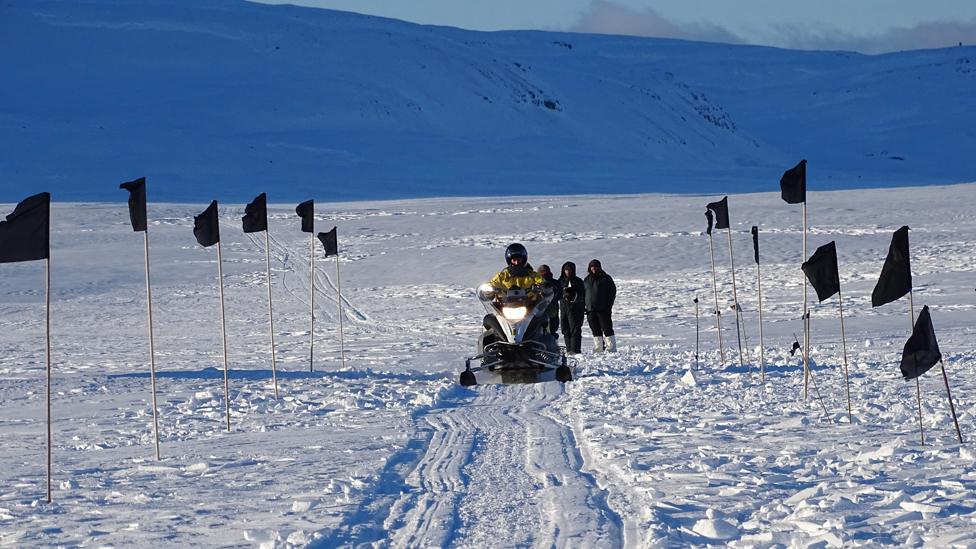
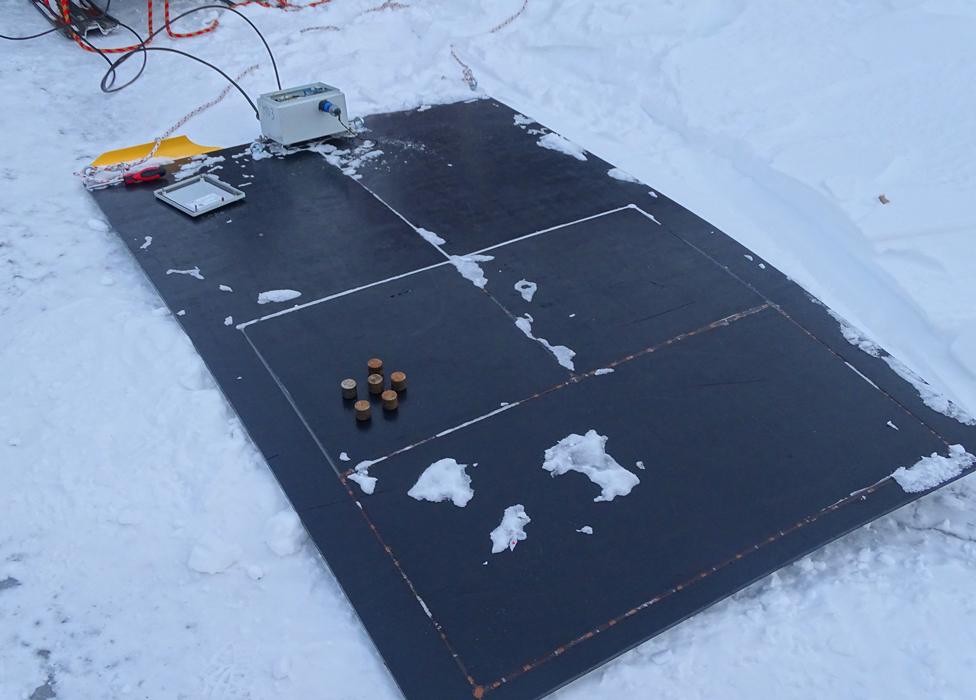
Ultimately, the skidoo would drag an array of five such detector panels
Jonathan.Amos-INTERNET@bbc.co.uk, external and follow me on Twitter: @BBCAmos, external